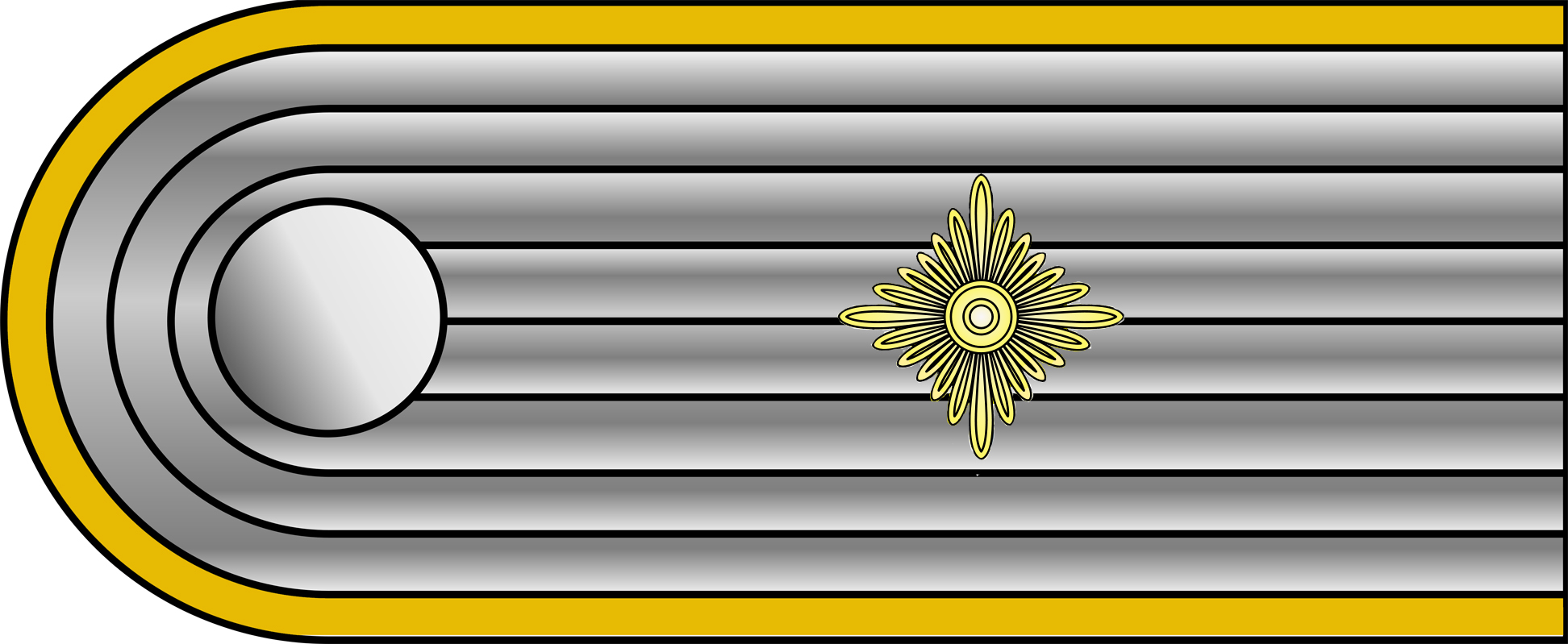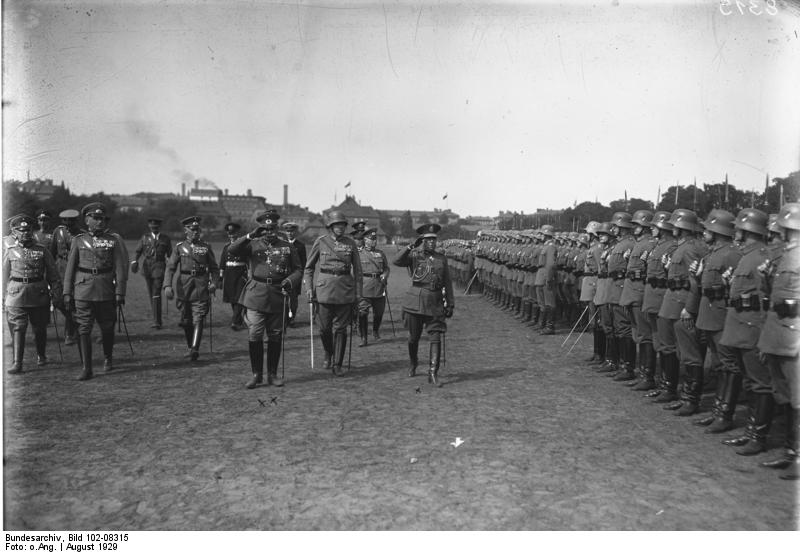|
Werner Von Haeften
Werner Karl Otto Theodor von Haeften (9 October 1908 – 21 July 1944) was an Oberleutnant in the Wehrmacht who took part in the military-based conspiracy against Adolf Hitler known as the 20 July plot. Early life Haeften and his brother Hans were born in Berlin, the sons of Hans von Haeften, an army officer and President of the ''Reichsarchiv'' (German National Archives). He studied law in his home town and then worked for a bank in Hamburg until the outbreak of the Second World War when he joined the German Army. War service In 1943, having recovered from a severe wound he had suffered on the Eastern Front, Haeften became adjutant to Oberst Claus Schenk Graf von Stauffenberg, one of the leading figures in the German Resistance. On 20 July 1944, Haeften accompanied Stauffenberg to the military high command of the ''Wehrmacht'' near Rastenburg, East Prussia (now Kętrzyn, in Poland), where Stauffenberg planted a briefcase bomb in a conference room at Hitler's Wolfsschanz ... [...More Info...] [...Related Items...] OR: [Wikipedia] [Google] [Baidu] |
German Empire
The German Empire (),Herbert Tuttle wrote in September 1881 that the term "Reich" does not literally connote an empire as has been commonly assumed by English-speaking people. The term literally denotes an empire – particularly a hereditary empire led by an emperor, although has been used in German to denote the Roman Empire because it had a weak hereditary tradition. In the case of the German Empire, the official name was , which is properly translated as "German Empire" because the official position of head of state in the constitution of the German Empire was officially a "presidency" of a confederation of German states led by the King of Prussia who would assume "the title of German Emperor" as referring to the German people, but was not emperor of Germany as in an emperor of a state. –The German Empire" ''Harper's New Monthly Magazine''. vol. 63, issue 376, pp. 591–603; here p. 593. also referred to as Imperial Germany, the Second Reich, as well as simply Germany, ... [...More Info...] [...Related Items...] OR: [Wikipedia] [Google] [Baidu] |
Direction Of The Main Blow
Direction may refer to: * Relative direction, for instance left, right, forward, backwards, up, and down ** Anatomical terms of location for those used in anatomy ** List of ship directions *Cardinal direction Mathematics and science *Direction vector, a unit vector that defines a direction in multidimensional space * Direction of a subspace of a Euclidean or affine space * Directed set, in order theory * Directed graph, in graph theory * Directionality (molecular biology), the orientation of a nucleic acid Music * For the guidance and cueing of a group of musicians during performance, see conducting * ''Direction'' (album) a 2007 album by The Starting Line * Direction (record label), a record label in the UK in the late 1960s, a subsidiary of CBS Records, specialising in soul music * '' Directions: The Plans Video Album'', a DVD video album made of videos inspired by songs from indie rock/pop band Death Cab for Cutie's album ''Plans'' * ''Directions'' (Miles Davis alb ... [...More Info...] [...Related Items...] OR: [Wikipedia] [Google] [Baidu] |
Plötzensee Prison
Plötzensee Prison (german: Justizvollzugsanstalt Plötzensee, JVA Plötzensee) is a juvenile prison in the Charlottenburg-Nord locality of Berlin with a capacity for 577 prisoners, operated by the State of Berlin judicial administration. The detention centre established in 1868 has a long history; it became notorious during the Nazi era as one of the main sites of capital punishment, where about 3,000 inmates were executed. Famous inmates include East Germany's last communist leader Egon Krenz. History The prison was founded by resolution of the Prussian government under King William I and built until 1879 on the estates of the Plötzensee manor, named after nearby Plötzensee Lake (''Plötze'' is the local German name of the common roach, cf. ''Płoć'' in Polish). The area divided by the Berlin-Spandau Ship Canal opened in 1859 was located at the outskirts of the Tegel forest northwest of the Berlin city limits in the Province of Brandenburg. The theologian Johann Hinrich ... [...More Info...] [...Related Items...] OR: [Wikipedia] [Google] [Baidu] |
Bendlerblock
The Bendlerblock is a building complex in the Tiergarten district of Berlin, Germany, located on Stauffenbergstraße (formerly named ''Bendlerstraße''). Erected in 1914 as headquarters of several Imperial German Navy (''Kaiserliche Marine'') offices, it served the Ministry of the Reichswehr after World War I. Significantly enlarged under Nazi rule, it was used by several departments of the '' Oberkommando der Wehrmacht'' (OKW) from 1938, especially the ''Oberkommando des Heeres'' and the '' Abwehr'' intelligence agency. The building is notable as the headquarters of a resistance band of Wehrmacht officers who staged the 20 July plot against Adolf Hitler in 1944. As the leaders of the conspiracy were summarily shot in the courtyard, the Bendlerblock also includes the Memorial to the German Resistance. Since 1993, the building complex has served as a secondary seat of the German Federal Ministry of Defence. Name The complex got its name from the street it was on. Today, it is ... [...More Info...] [...Related Items...] OR: [Wikipedia] [Google] [Baidu] |
Infantry Regiment Großdeutschland
The Infantry Regiment ''Großdeutschland'' (german: Infanterie-Regiment "Großdeutschland"; ) was an élite German Army (Wehrmacht), German Army ceremonial and combat unit which saw action during World War II. Originally formed in 1921 it was known as the ''Wachregiment Berlin''. Renamed ''Infanterie-Regiment Greater Germanic Reich, Großdeutschland'' in 1939, the regiment served in the campaigns in France and the Low Countries. It then served exclusively on the Eastern Front (World War II), Eastern Front until the end of the war. It was destroyed near Pillau in May 1945. ''Großdeutschland'' is sometimes mistakenly perceived to be part of the Waffen-SS, whereas it was actually a unit of the regular German Army (''Heer''). In 1942 it was expanded into the Großdeutschland Division, the best-equipped division in the Wehrmacht, which received equipment before all other units, including some Waffen-SS units; however it remained a regiment within the division and was renamed to ''Gr ... [...More Info...] [...Related Items...] OR: [Wikipedia] [Google] [Baidu] |
Friedrich Fromm
Friedrich Wilhelm Waldemar Fromm (8 October 1888 – 12 March 1945) was a German Army officer. In World War II, Fromm was Commander in Chief of the Replacement Army (''Ersatzheer''), in charge of training and personnel replacement for combat divisions of the German Army, a position he occupied for most of the war. A recipient of the Knight's Cross of the Iron Cross, he was executed for failing to act against the plot of 20 July 1944 to assassinate Hitler. Early life Fromm was born in Charlottenburg. He served as a Prussian Army officer during World War I. Head of the Reserve Army In 1939, Fromm became Chief of Army Equipment and commander of the Replacement Army. When Operation Barbarossa stalled outside of Moscow in December 1941 and the Russian counter-attack started, Hitler took direct command of the Army and re-organized the armed forces' command structure. The Office of the Chief of Army Armament and the Reserve Army under ''Generaloberst'' Friedrich Fromm was created, ... [...More Info...] [...Related Items...] OR: [Wikipedia] [Google] [Baidu] |
Albrecht Mertz Von Quirnheim
Albrecht Mertz von Quirnheim (25 March 1905 – 21 July 1944) was a German Army colonel and a resistance fighter in Nazi Germany involved in the 20 July plot against Adolf Hitler. Early life Quirnheim was born in Munich, the son of Hermann Mertz von Quirnheim, a captain on the Bavarian General Staff, and the nephew of Walter Hohmann. He spent his youth in the Bavarian capital before his father became head of the Imperial Archive (the ''Reichsarchiv'') and the family moved to Potsdam in Prussia. As a child he befriended Hans-Jürgen von Blumenthal and as a young man came to know the brothers Werner von Haeften and Hans Bernd von Haeften, through family connections; these were all future fellow-conspirators. Military career Following his ''Abitur'', Quirnheim joined the ''Reichswehr'' in 1923. His friendshipHoffman, P. (1995) Stauffenberg (A Family History), 1905-1944, Mcgill-Queen's University Press, Canadap. 81 [...More Info...] [...Related Items...] OR: [Wikipedia] [Google] [Baidu] |
Friedrich Olbricht
Friedrich Olbricht (4 October 1888 – 21 July 1944) was a German general during World War II and one of the plotters involved in the 20 July Plot, an attempt to assassinate Adolf Hitler in 1944. He was a senior staff officer, with the rank of lieutenant general. He was secretly in contact with most of the leaders of the resistance. They briefed him on their various plots and he placed sympathetic officers in key positions. He quietly encouraged field commanders to support the resistance. By late 1943 his office was the centre of Resistance plotting, under Claus von Stauffenberg. Had the 20 July plot to assassinate Adolf Hitler been successful, he would have assumed the position of Minister of Finance in a post-Nazi regime. Early life Olbricht was born on 4 October 1888 in Leisnig, Saxony, to Richard Olbricht, a mathematics professor and director of the ''Realschule'' (secondary school) in Bautzen. Career Olbricht successfully passed the ''Abitur'' (university preparatory sc ... [...More Info...] [...Related Items...] OR: [Wikipedia] [Google] [Baidu] |
Coup D'état
A coup d'état (; French for 'stroke of state'), also known as a coup or overthrow, is a seizure and removal of a government and its powers. Typically, it is an illegal seizure of power by a political faction, politician, cult, rebel group, military, or a dictator. Many scholars consider a coup successful when the usurpers seize and hold power for at least seven days. Etymology The term comes from French ''coup d'État'', literally meaning a 'stroke of state' or 'blow of state'. In French, the word ''État'' () is capitalized when it denotes a sovereign political entity. Although the concept of a coup d'état has featured in politics since antiquity, the phrase is of relatively recent coinage.Julius Caesar's civil war, 5 January 49 BC. It did not appear within an English text before the 19th century except when used in the translation of a French source, there being no simple phrase in English to convey the contextualized idea of a 'knockout blow to the existing administratio ... [...More Info...] [...Related Items...] OR: [Wikipedia] [Google] [Baidu] |




